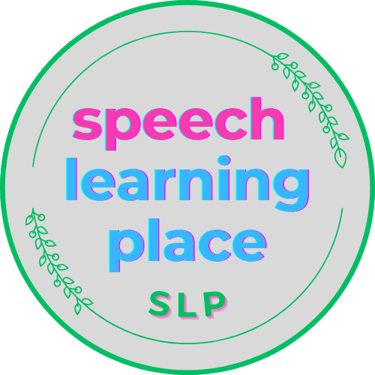Welcome to Speech Learning Place
How a Simple Story Eased a Big Move
Discover how a quick, on‑the‑fly story helped one of my students conquer a big move - and why these types of stories work. Plus, grab my Social Skills Story Growing Bundle for ready‑made narratives that ease any transition, all year long.
SaraBeth Cuthbert
7/16/20252 min read


Introduction
Many, many years ago, a mom reached out in a panic. Her son was facing a huge transition: new house, new school, new routines. I suggested a Social Skills Story to prepare him for the change. She shared photos of their future home and school. I drafted the story in Microsoft Word (Google Slides wasn’t in my toolkit yet), and we read it together at school. He practiced it at home with mom. After the move, she emailed: “He did great. Thank you for making this transition a little easier!” That moment reminded me why personalized stories work.
What Makes These Stories So Effective (IMO)
Real Photos, Real Connection
Ideally, you’ll use photos of the actual student, their classroom, hallways, or bus stop. If that isn’t possible, select realistic images of similar settings. Either way, visuals make “what happens next” feel concrete and achievable.Consistent Reading, Consistent Message
Daily readings—even for just a week—by everyone on the team (specialists, teachers, aides, parents) build a unified script. Consistency across settings reduces confusion and anxiety.Perfect for Groups and Classrooms
Introducing a new routine or event to an entire class? A photo‑driven story gives every student—especially those needing concrete visuals - the same “map” for what’s coming.
Bringing Social Skills Stories into Your Routine
Gather Photos
Snap key locations: hallways, lunch areas, playgrounds, coat hooks—anywhere the student will go.Write Simple Text
Stick to short “I” statements, like “I can walk into my classroom.” Keep it clear and direct.Use Google Slides Templates
I use Google Slides templates because they’re simple to create and share with parents, teachers, or staff. Just open an editable Social Skills Story template, add your photos, update the text, and you’re all set.Share Across the Team
Email a Slides link to parents.
Export a PDF for teachers and aides.
Post a printed copy in your therapy room or classroom.
Read Together
At school: Group read‑aloud before morning routines.
At home: Bedtime or car rides reinforce the message.
Introduce New Situations
From field trips to fire drills, a quick story offers a shared reference for every learner.
Tips from My SLP Toolbox
Start Early: Send photos and the story home a week before the event.
Involve Students: Let them add selfies at the bus stop or their cubby photo.
Update Easily: If routines change, tweak the Slides deck—no need to start over.
Conclusion
That simple story I created on the fly for a student facing a big move showed me the power of personalized, photo‑driven narratives. When we read it daily—at school with staff and at home with his mom—it turned uncertainty into confidence.
If you’re ready to streamline your own Social Skills Story process, check out my Social Skills Story Growing Bundle. It’s packed with editable Google Slides templates and fresh photo‑friendly stories added all year long. No more scrambling—just drag in your images, tweak the text, and share across your team.
What makes transitions easier for your students? Share your strategies in the comments below!
